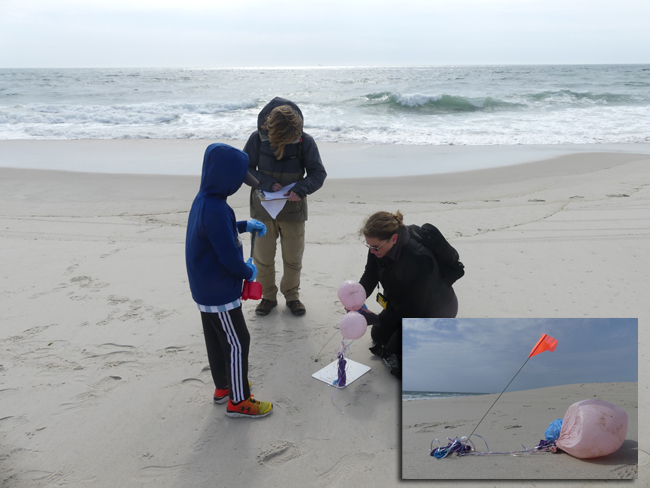
New York Sea Grant programming is addressing the issue of harmful balloon debris through removal, outreach, and public awareness-building projects, such as balloon debris surveys at Jones Beach on Long Island, NY. Credit: Krista Haas / NYSG.
New York, Connecticut Sea Grant Programs to Lead Development of Long Island Sound Marine Debris Reduction Action Plan
Contacts:
Katherine Bunting-Howarth, J.D., Ph.D, New York Sea Grant's Associate Director, E: kathybh@cornell.edu, P: (607) 255-2832
Judy Benson, Connecticut Sea Grant communications coordinator, E: judy.benson@uconn.edu, P: (860) 287-6426
Stony Brook, NY, April 23, 2020 - Abandoned boats, broken lobster traps, discarded tires and all types of other trash aren’t just eyesores on Long Island Sound’s beaches, coves and channels.
They’re also hazards to wildlife, can impede navigation, and threaten human safety and health. To address this problem, Sea Grant programs in Connecticut (CTSG) and New York (NYSG) will coordinate a Marine Debris Action Plan for Long Island Sound. The project will gather organizations involved in debris removal and prevention as the basis to develop a comprehensive strategy to rid the Sound of as much debris as possible.
The Marine Debris Action Plan for Long Island Sound is one of eight projects awarded funding through the National Oceanic and Atmospheric Administration’s Sea Grant-Marine Debris Special Projects Competition. A total of $350,000 was awarded for the eight projects, which will be matched by $350,000 from the state programs. The CT-NY project will receive $50,000 in federal funding which will be matched with $53,000 from the two programs.
The two Sea Grant programs will develop the plan in cooperation with the EPA Long Island Sound Study, a bi-state cooperative partnership of state and federal agencies, and numerous user groups and organizations concerned about the estuary shared by New York and Connecticut. The NOAA Marine Debris Program coordinators for the Northeast and Mid-Atlantic regions will be active participants, sharing insights and experiences from other similar efforts.
“This is a wonderful and timely opportunity to bring together organizations and individuals with an interest in reducing the impacts of marine debris on Long Island Sound through research, education and action,” said Nancy Balcom, associate director of Connecticut Sea Grant. “While a number of individual efforts are already going on, a comprehensive action plan will enable us to identify gaps, implement actions in a more comprehensive manner and collectively document our progress.“
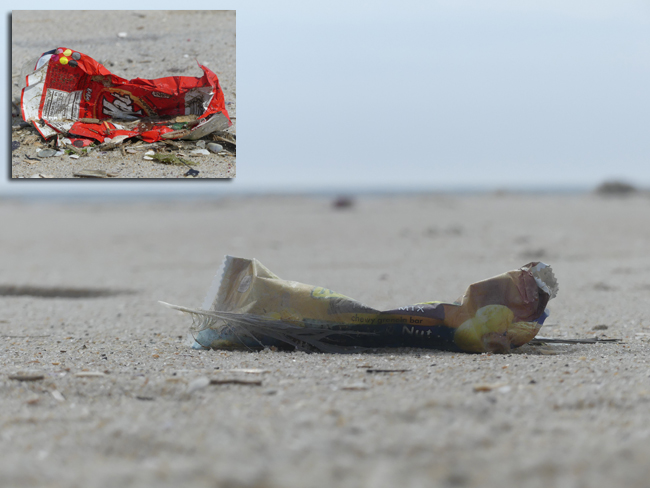
Credit: Ryan Strother / NYSG.
“New York Sea Grant is thrilled to partner in this effort to reduce the flow of trash, from large to microscopic, in order to protect our Sound, its habitats and its creatures,” said Kathy Bunting-Howarth, associate director of New York Sea Grant. “Through collaborative planning, we can work to stop the flow of these contaminants into this estuary of national significance and from mistakenly being ingested as food by an aquatic creature.”
To begin the two-year project later this spring, the Sea Grant programs will invite stakeholders concerned about the marine debris issue to join as partners in a creating a plan that builds on the significant existing efforts. These include five recent major campaigns in both states aimed at reducing plastic pollution, corralling derelict fishing gear and cleaning up beaches; along with three new initiatives and three Sea Grant-funded research projects on impacts of plastic on the marine environment.
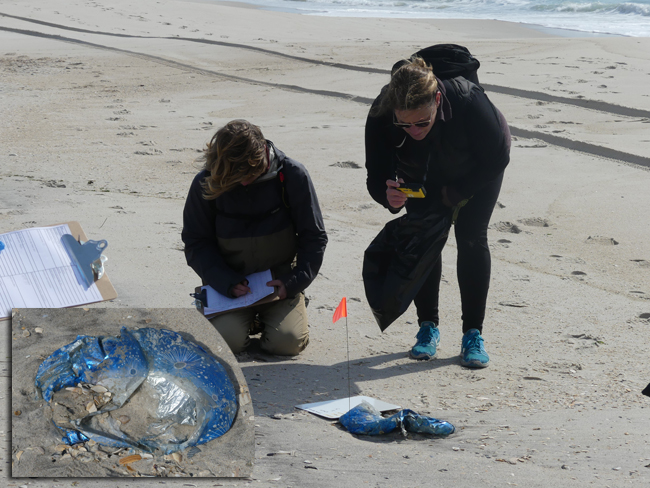
Credit: Ryan Strother / NYSG.
The plan will delineate goals and strategies needed for implementation, enlisting undergraduate students from UConn and Stony Brook University in service learning opportunities in the 2020-21 academic year to research other multi-state debris removal plans that could serve as templates.
As the project progresses, partners will be asked to voluntarily take on responsibilities for specific actions to advance the plan to completion. Once finished, the plan would provide a methodical description of the steps that should be followed from 2022 to 2027 to achieve the priority goals and objectives agreed up by the partners.
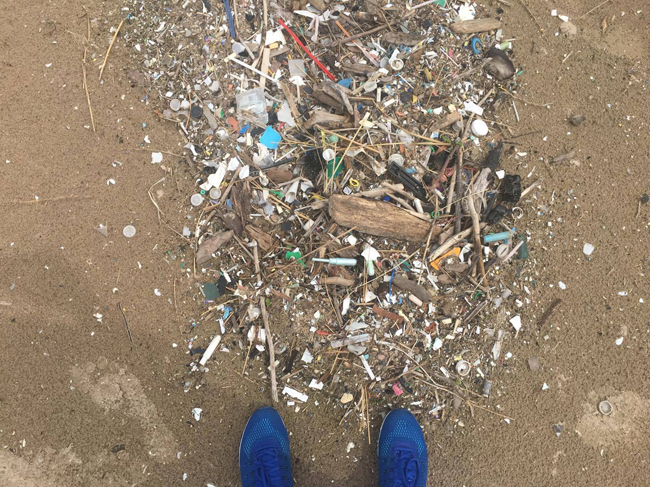
Plastic pollution on our shorelines is plain to see. But concern is mounting over the impacts of microplastics in our waters. Recent NYSG research examined the potential impacts microplastics can have on the aquatic food chain in Lake Ontario. Credit: Paul C. Focazio / NYSG.
For more on the topic of marine debris, see www.nyseagrant.org/microplastics.
For information on the #DontTrashLISound campaign involving CT Sea Grant and several partners, see: seagrant.uconn.edu.
More Photos: Marine Debris
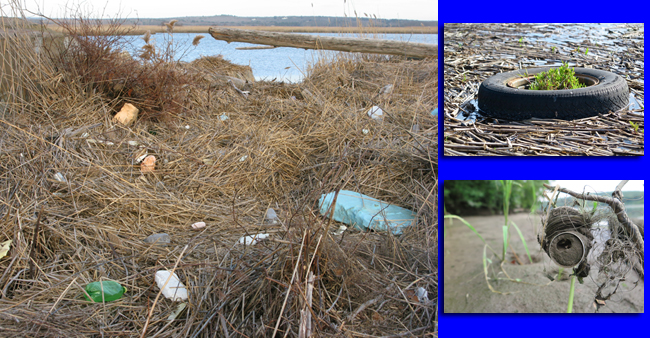
Chunks of Styrofoam and a plastic bottle are scattered among marsh grass in Old Saybrook; (At far left, top) A discarded tire sits in a marsh in Old Saybrook. (At far left, bottom) An empty can tangled in fishing line hangs off a branch on the shore in Old Saybrook. Credit: Judy Preston / Connecticut Sea Grant.

(At left) An empty plastic barrel lies on Mitchell Beach in New London. (At right) A metal tank floats in Whalebone Cove, a Long Island Sound Stewardship site in Lyme. Credit: Judy Benson, Judy Preston / Connecticut Sea Grant.
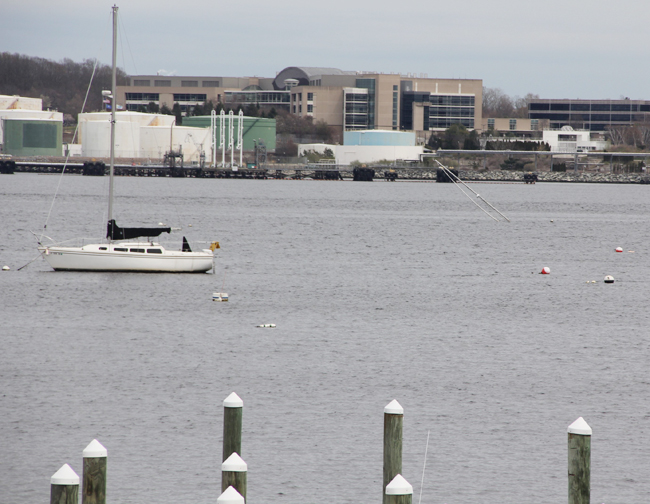
The mast of a sunken sailboat, upper right, juts from the water in a mooring area off Pequot Avenue in New London. Credit: Judy Benson / Connecticut Sea Grant.
More Info: New York Sea Grant
New York Sea Grant (NYSG), a cooperative program of Cornell University
and the State University of New York (SUNY), is one of 34 university-based
programs under the National Oceanic and Atmospheric Administration’s
National Sea Grant College Program.
Since 1971, NYSG has represented a statewide network of integrated
research, education and extension services promoting coastal community
economic vitality, environmental sustainability and citizen awareness
and understanding about the State’s marine and Great Lakes resources.
Through NYSG’s efforts, the combined talents of university scientists
and extension specialists help develop and transfer science-based
information to many coastal user groups—businesses and industries,
federal, state and local government decision-makers and agency managers,
educators, the media and the interested public.
The program maintains Great Lakes offices at Cornell University, SUNY
Buffalo, SUNY Oswego and the Wayne County Cooperative Extension office
in Newark. In the State's marine waters, NYSG has offices at Stony Brook
University in Long Island, Brooklyn College and Cornell Cooperative
Extension in NYC and Kingston in the Hudson Valley.
For updates on Sea Grant activities: www.nyseagrant.org has RSS, Facebook, Twitter, and YouTube links. NYSG offers a free e-list sign up via www.nyseagrant.org/nycoastlines for its flagship publication, NY Coastlines/Currents, which is published quarterly. Our program also produces an occasional e-newsletter,"NOAA Sea Grant's Social Media Review," via its blog, www.nyseagrant.org/blog.